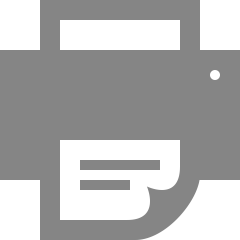Every business has intellectual property that is entitled to protection and from which it can potentially derive profit. One such area is copyright law; although there is often confusion about (1) what exactly is protected by copyright law, (2) how the copyrights are secured, and (3) who exactly is the owner when a copyrightable work is created by an independent contractor or subcontractor.
Copyright Protects Tangible Expressions of Ideas
Copyright law protects “original works of authorship that are fixed in a tangible form of expression.” It is limited to these specific categories: literary works; musical works, including any accompanying words; dramatic works, including any accompanying music; pantomimes and choreographic works; pictorial, graphic, and sculptural works; motion pictures and other audiovisual works; sound recordings; and architectural works. But, these categories should be interpreted broadly.
Does Your Business Own Any Copyrightable Works?
Copyright protection isn’t just for authors and artists. Does your business produce, create or record any of the following in a tangible form, paper or digital? Then you most likely have copyrightable works.
- Architectural plans
- Articles & Publications
- Blogs
- Books
- Cartoons
- Computer software
- Demonstrations
- Graphic art
- Magazines, Newspapers & Newsletters
- Maps
- Marketing materials
- Motion pictures
- Multimedia presentations
- Podcasts
- Program curricula
- Slideshows
- Trade journals
- Training materials
- Photographs
- Websites
Not Everything is Protected by Copyright
It’s important to note is what is NOT protected by copyright law. Only the actual expression of an author is protected, not the underlying idea itself. Copyright protection does NOT extend to:
- Ideas
- Methods, processes
- Systems
- Ideas or procedures for doing, making, or building things
- Scientific or technical methods or discoveries
- Business operations or procedures
- Method of operation
- Improvisational speeches
- Unwritten or unrecorded performances
- Titles, names
- Short phrases, slogans
- Familiar symbols
- Variations of typographic ornamentation, lettering, or coloring
- Listings of ingredients
- Standard calendars
- Charts
- Tape measures and rulers
- Lists or tables taken from public documents
- Blank forms for recording rather than conveying information
What Rights Does Copyright Provide?
Copyright means the owner has the exclusive right to do and authorize others to do the following to the original work:
- reproduce or copy;
- prepare derivative works;
- distribute copies to the public by sale, license, or lending;
- perform the work publicly or by means of a digital audio transmission; and
- display the work publicly.
However, these rights are subject to certain statutory exceptions, such as “fair use” and parody. The copyright owner may be entitled to recover certain statutory and civil damages and other remedies for infringement of these rights if the work is registered with the U.S. Copyright Office.
Who is the Owner of the Copyright?
A work is protected from the time it is fixed in its tangible form. The owner is the person who created the work. When a person is an employee and the work is in the scope of their employment, the work is considered “work for hire” and the owner is the company. However, if a person is an independent contractor creating work for a company, the owner is the person UNLESS certain conditions are met: (1) there must be a written agreement indicating that the work is being created for the company by the contractor as a “work for hire” AND (2) the work must fall into one of the following categories:
- contribution to a collective work
- part of a motion picture or other audiovisual work
- translation
- supplementary work
- compilation
- instructional text
- test and answer material
- atlas
Notice of Copyright
It is to your benefit to put a copyright notice on a work, although it’s no longer required under U.S. law. The notice precludes any infringer from claiming they didn’t know the work was protected. An example of the proper form is: © 2021 Author’s Name
How to Secure a Copyright
Copyright in a work is secured automatically when the work is created in a fixed medium. No publication or registration or other action is required to secure copyright. However, there are definite advantages to registration, including the right to recover statutory damages for any infringement of the work.
Filing fees range from $35 – $65 per work, although under certain circumstances group registrations may be possible. Contact Kandis Koustenis at kkoustenis@beankinney.com or 703-525-4000 if you wish to discuss copyright protection for your works of expression.

